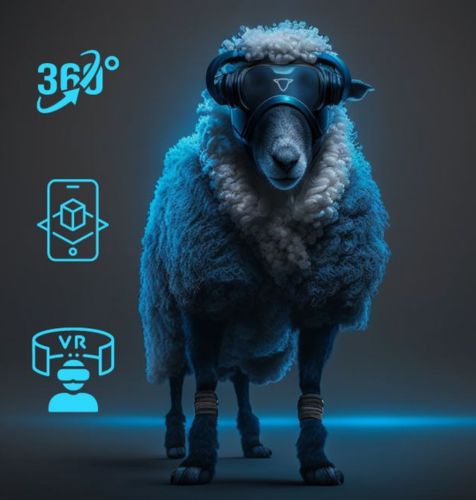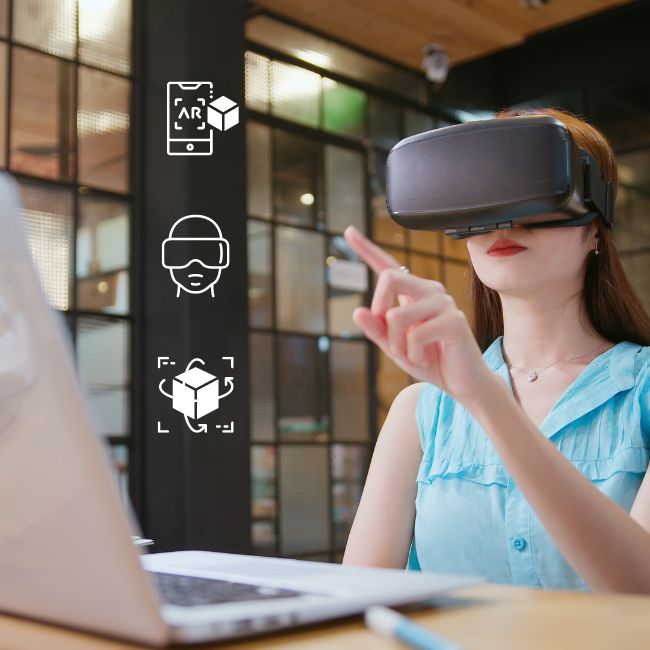#Marketing #VR #AR
How to use 3D Models in Marketing?
As technology continues to evolve, businesses are always looking for new and innovative ways to market their products or services.
In this article:
One of the most exciting developments in recent years has been the use of 3D models in marketing.
In this article, I will explore the benefits of using 3D models in marketing, the types of 3D models used in marketing, the process of creating 3D models for marketing, expert tips for creating eye-catching 3D models, best practices for using 3D models in marketing campaigns, examples of successful 3D model marketing campaigns, tools and software for creating 3D models, outsourcing 3D model creation, and the future of 3D models in marketing.

The Benefits of Using 3D Models in Marketing
There are many benefits to using 3D models in marketing. One of the most significant benefits is that they can give consumers a better understanding of a product or service. 3D models provide a level of detail and interactivity that traditional 2D images or videos cannot match. With 3D models, consumers can rotate and zoom in on products, which gives them a better sense of how they look and function. Additionally, 3D models allow businesses to showcase their products in a more dynamic and engaging way, which can help to increase sales and brand awareness.
Another benefit of using 3D models in marketing is that they can be more cost-effective than traditional marketing methods. Creating a 3D model can be a one-time investment that can be used in a variety of marketing materials, such as videos, animations, and interactive experiences. This can save businesses money in the long run compared to creating multiple physical prototypes or hiring photographers or videographers to create traditional marketing materials.
Finally, 3D models can help businesses to stand out in a crowded marketplace. With so many products and services vying for consumers' attention, it can be challenging to make an impact. However, using 3D models can help businesses differentiate themselves by providing a unique and compelling way to showcase their products or services.


Types of 3D Models Used in Marketing
There are several types of 3D models that are commonly used in marketing. Some of the most popular types include:
Product models: These 3D models are digital representations of physical products. They can be used to showcase a product's features and functionality, as well as to provide a better understanding of how it works. Provides direct interaction with the customer
Environment models: These 3D models are used to create digital environments that can be used in marketing materials. For example, an environment model could be used to create a virtual store where customers can browse and interact with products.
Character models: These 3D models are used to create digital characters that can be used in marketing materials. For example, a character model could be used in an animated video to promote a product or service.
Prototype models: These 3D models are used to create digital prototypes of products before they are created in the real world. This can help businesses to identify and address any issues before investing in physical prototypes.
The Process of Creating 3D Models for Marketing
Creating a 3D model for marketing can be a complex process, but it is often worth the effort. The process typically involves several steps, including:
Research: Before creating a 3D model, it is essential to research the product or service thoroughly. This can involve gathering reference images, studying the product's features and functionality, and understanding the target audience.
Design: Once the research is complete, the next step is to design the 3D model. This involves creating a digital representation of the product or service that accurately reflects its appearance and functionality.
Modeling: Once the design is complete, the next step is to create the 3D model. This involves using specialized software to create a digital 3D model that can be manipulated and viewed from all angles.
Texturing: Once the 3D model is complete, the next step is to add textures and materials to it. This can help to give the model a more realistic appearance.
Lighting: Once the texturing is complete, the next step is to add lighting to the 3D model. This can help to create a more realistic and engaging visual experience.
Rendering: Once all of the elements are in place, the final step is to render the 3D model. This involves using specialized software to create a high-quality image or video of the 3D model that can be used in marketing materials.


Expert Tips for Creating Eye-Catching 3D Models
Creating an eye-catching 3D model can be challenging, but there are several tips that can help:
Use reference images: Using reference images can help to ensure that the 3D model accurately reflects the appearance and functionality of the product or service.
Keep it simple: It can be tempting to add too much detail to a 3D model, but this can make it appear cluttered and difficult to understand. Keeping the design simple can help to ensure that the model is easy to understand and engage with.
Use high-quality textures and materials: Using high-quality textures and materials can help to give the 3D model a more realistic appearance, which can help to engage consumers.
Pay attention to lighting: Lighting can have a significant impact on the appearance of a 3D model. Paying attention to lighting can help to create a more engaging and realistic visual experience.
Test the model: Before using a 3D model in marketing materials, it is essential to test it thoroughly. This can involve getting feedback from consumers or conducting user testing to identify any issues or areas for improvement.
Already have a 3D model?
Unlock The Power of 3D & 360° Marketing!
Click for 14 days free 3D marketing tool.
Best Practices for Using 3D Models in Marketing Campaigns
There are a few best practices to keep in mind when using 3D models in marketing campaigns:
Use the right format: It's important to use the right format when using 3D models in marketing materials. This can help ensure that the model is compatible with different devices and platforms. Click for multi-platform compatibility in the format you want!
Keep file size manageable: 3D models can be large files, which can make them difficult to use in marketing materials. Keeping the file size manageable can help ensure that the model can be used in a variety of marketing materials.
Use the model in different ways: 3D models can be used in a variety of marketing materials such as videos, animations, and interactive experiences. Using the model in different ways can help engage consumers and gain a broader understanding of the product or service. Click to upload your 3d model to your website!
Consider accessibility: Considering accessibility is essential when using 3D models in marketing materials. This may include ensuring the model is compatible with assistive technologies and providing alternative formats for consumers who may have difficulty accessing the model.

Examples of Successful 3D Model Marketing Campaigns
There are many examples of successful 3D model marketing campaigns.
One of the most notable examples is the IKEA Place app, which allows consumers to preview furniture in their homes using augmented reality. Another example is the Nike SNKRS app, which uses 3D models to provide a more engaging and interactive shopping experience.
Tools and Software for Creating 3D Models
There are many tools and software programs available for creating 3D models.
Some of the most popular options are Blender, Autodesk 3ds Max, and Maya. These programs provide a range of features and capabilities that can be used to create high-quality 3D models for marketing. If your 3d model is ready, the Clooned tool is the most advantageous 3d marketing tool you can use. Click and discover 3d marketing tool.

Show your products with 3D Marketing Tool
Try Clooned today and take your products to the next level!
14 days free!
Conclusion and Future
In conclusion, using 3D models in marketing can provide many benefits, including a better understanding of products or services, cost-effectiveness, and the ability to stand out in a crowded marketplace. There are several types of 3D models that are commonly used in marketing, and the process of creating a 3D model can be complex but rewarding.
Expert tips and best practices can help businesses to create eye-catching 3D models and use them effectively in marketing campaigns. With the continued development of technology, the future of 3D models in marketing looks bright, and businesses that embrace this technology are likely to have a competitive advantage.
©2023. GUNERY. All Rights Reserved.


